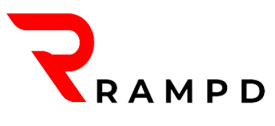Read Time: 3.5 min
One of the most underrated parts of the sales process is the demo.
Throwing s**t against the wall and seeing what sticks, hoping one of your features will pique the prospect’s interest, will not work.
This is why prospects ghost.
You’re not in the business of selling a product. You’re in the business of solving a problem. You solve problems by identifying where the source of pain comes from. This is the goal of the discovery (qualification) call.
If you want to close deals with more predictability, it’s imperative you master the psychology of the demo.
In this issue, I will discuss how to structure your demo, what slides to include and how to get them to the next step.
A Highly Personalized Demo Will Get You a Lot Further Than Feature Dumping.
Let’s dive right in. Here is the cadence (flow) of what a deck should look like.
Slide 1: Your Logo + Their Logo
- Underneath your logo, put your one-sentence value prop.

Slide 2: Current Situation
- This slide itemizes the challenges, pain points, and use cases they seek to solve as conveyed on the discovery. It’s the current way they’re handling the situation now.
- I frequently see founders add their bios and talk about themselves here. Don’t do this. No one cares. Unless they ask you about your background and why you started the company, feel free to share those details. If not, skip it. Prospects are interested in one thing – “How can you solve my problems, and how quickly.” That’s it.
Slide 3: Key Objectives
- You itemize what their ideal situation looks like when it comes to managing the workflow. What are their goals? Anything they’d like to improve would go on this slide.
Slide 4: Demo Layout
- Here you discuss how you’re going to walk them through the demo. It should be based on their highest priority to the lowest priority needs. In other words, if you have five key features and only three are applicable, don’t discuss the other 2. Start with the three that are most important.
- When you begin presenting, preface all the features you’ll show them by pointing to the pain they mentioned on the discovery and directing them to the solution.
Here’s an example.
Me: (Name), you mentioned on our previous call that one of your biggest bottlenecks is having the team manually do this work, as it eats up a lot of time that can be utilized elsewhere, right? (Pointing to the pain)
Prospect: Yes, that’s correct.
Me: Ok, cool. I’m about to show you how (your product) will automate this entire workflow and eliminate all the manual work. (Directing to the solution)
Following slide 4, you are going to demo your software. This should not take more than 10 minutes. Once you are finished showcasing the product, you will land on slide 5: Onboarding, and proceed through the rest of the deck.
Slide 5: Onboarding
- Discuss what onboarding looks like. For ex: If the customer was to move forward, what would you need from them, and what would getting started look like on their side?
Slide 6: Expected Results
- Add an itemized list of what the expected results would be when using your product. If possible, use a mix of qualitative and quantitative results. See my example below for some ideas of what the slide should look like.

Slide 7: Pricing
- Show the pricing tiers and recommend what tier would be the best fit based on the needs they conveyed on the discovery.
Slide 8: The offer
- The offer would go on this slide. Anyone who has just subscribed can find the issue where I discuss how to craft a killer offer here.
Slide 9: Next Steps
- Add what the next steps would be from this point forward. There are typically two options. (1) They’d like to move forward to the scoping call, or (2) they need to circle up internally and discuss if they will move forward. Regardless, make sure you book a follow-up call with a day/time with a calendar invite.
Here Are Five Important Takeaways:
- A demo call she never be more than 45 minutes.
- Do not add bio slides to the deck. No one cares.
- On slides 2, 3, and 6, go through one bullet point per slide.
- When you present, point to the pain and direct to the solution.
- Less is more. I’ve seen clients close 6 figure deals with simple decks.
That’s all for today.
See you all next week!
Darren
P.S. If you are interested in learning more about Rampd, you can book a call here.



